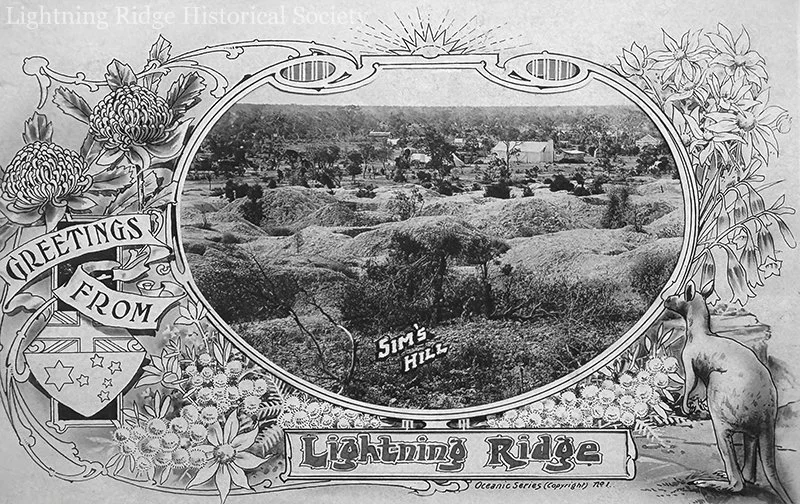Sim’s Hill
Sim’s Hill is one of the highest points in the district at 193 meters above sea level. It is the beginning of the ridge that runs west to the Castlereagh Highway. It was the earliest commercial opal field, and the site of the first opal rush in 1905.
Sim’s Hill produced mostly seam opal at a depth between 2 and 45 feet (some reports say 80 feet), but some nobby opal was also found. The seam is said to have had colour bars up to an inch thick.
Named for William Sim, who had a selection on Angledool Station and lived on the hill. He was killed in 1901 an unfortunate buggy accident. He lost control of his horse and cart and was speared through the belly on a broken branch beneath a tree.
The field was worked by Ted and Bob Bishop, the Wolstenholme brothers and George Thompson, among others.
Wallangulla settlement formed in 1906 on the slope of Sim’s Hill. The Three Mile opal rush in 1908 drew miners away from Wallangulla to the second settlement of Nettleton on the Three Mile Flat. Eventually both would dissolve, Wallangulla became the Old Town when the New Town was surveyed on land least likely to be opal bearing in 1907.
Today, Sim's Hill is a dense field of residential claims, with some very neat and tidy camps, a castle and a bottle house.
Stuart Lloyd’s The Lightning Ridge Book records that Sim’s Hill had produced £11,600 by 1967.
Article: Research by Russell Gawthorpe and Leisa Carney, edited by Russell Gawthorpe. LRHS research compiled by Len Cram and Barbara Moritz. Sources: The Lightning Ridge Book, Stuart Lloyd, 1967, p. 68; Lightning Ridge - The Home of the Black Opal: Unique to the World, Gan Bruce, 1983, p. 74; The Occurrence of Opal at Lightning Ridge and Grawin, with Geological Notes on County Finch, J. W Whiting & R. E. Relph, 1958, p. 9; Discover Opals: Before and Beyond 2000 with Surface Indications, Stephen Aracic, 1996, p. 141.

